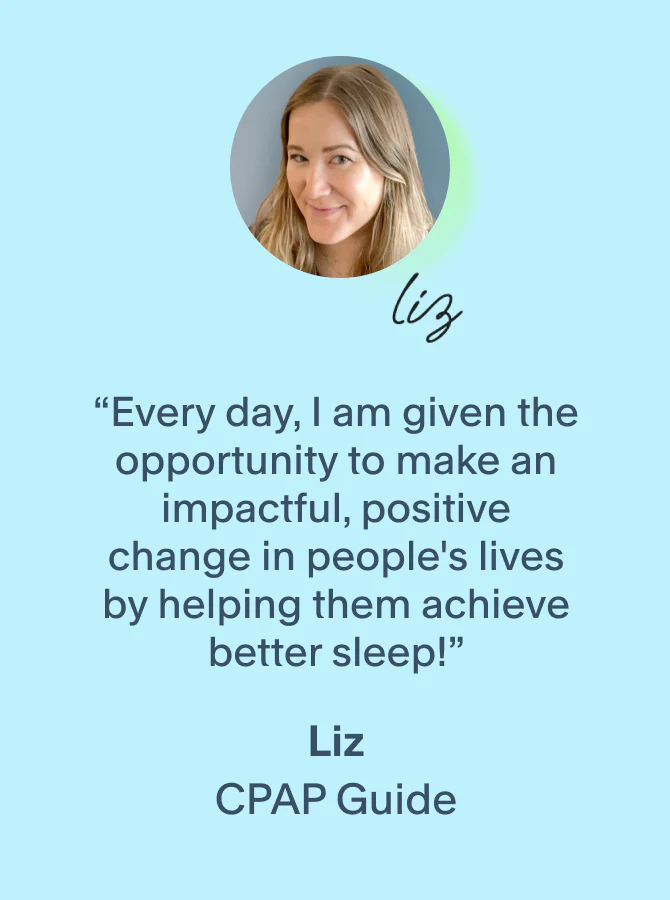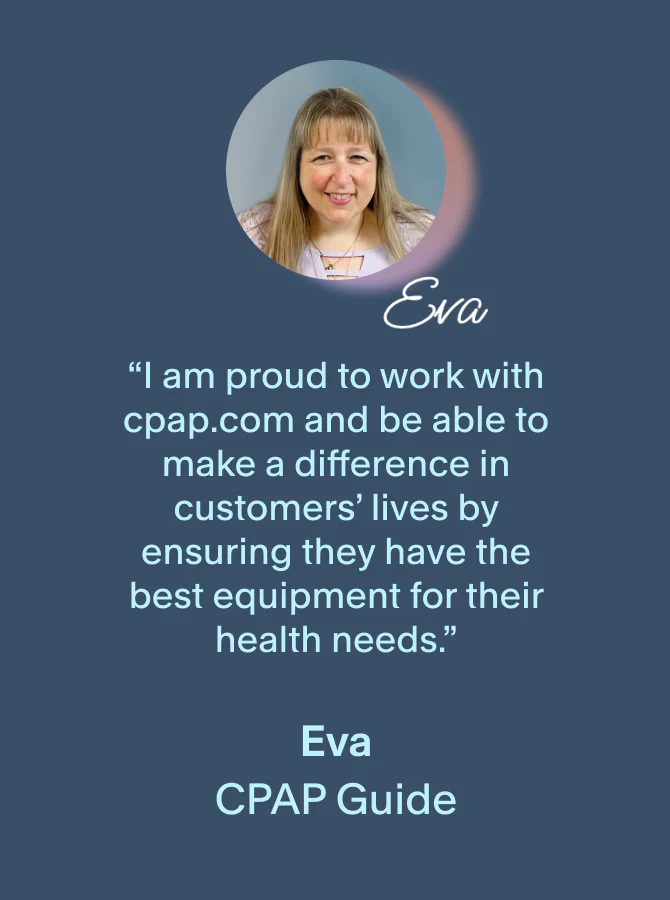Our content undergoes rigorous expert review, evidence-based research, and regular updates for accuracy.
💡 Key Takeaways
- Opt for Side Sleeping: Side sleeping is the most recommended position for managing sleep apnea, particularly Obstructive Sleep Apnea (OSA). It's effective in reducing airway blockages and snoring.
- Left vs. Right Side: While both sides are effective, sleeping on your left side is often recommended for severe sleep apnea and high blood pressure. Right-side sleeping may be more comfortable for those with certain heart conditions.
- Incline for Improvement: Sleeping at an incline can also be beneficial, especially for those who find side sleeping uncomfortable. It can reduce the number of OSA-related breathing episodes.
- Avoid Back Sleeping: Lying on your back increases the likelihood of airway blockages and is generally not recommended for sleep apnea patients.
- Consult Healthcare Providers: Always consult with a healthcare provider for personalized advice, especially if you have underlying conditions like heart failure or GERD.
When it comes to managing sleep apnea, everyone has their own unique needs. Whether you're actively treating your sleep apnea via CPAP therapy or looking for an alternative solution, you should know that your sleeping position can greatly impact the severity of your condition.
The best sleeping position for sleep apnea is side sleeping, which has also been shown to reduce snoring. In fact, the practice is considered so effective that it has even been given an official name— positional therapy— and doctors often suggest it alongside other forms of treatment.
Not a side sleeper? No worries! There are other ways to implement this simple approach to sleep apnea treatment. We'll get into each one in just a moment as we list each sleep position from most to least effective.
We look forward to guiding you through the many ways that side, stomach, inclined, and back sleeping can impact your sleep apnea symptoms. Lastly, we'll list some of the most popular alternative sleep apnea treatment options that you can pair with positional therapy!
Best Sleeping Position for Sleep Apnea
According to most health experts, sleeping on your side is a highly effective way to reduce the negative effects of several conditions, including sleep apnea. Side sleeping is particularly helpful for people with Obstructive Sleep Apnea (OSA). However, scientists have also reported improvement in individuals who have Central Sleep Apnea (CSA) due to some underlying condition, such as heart failure.
Left-Sided Sleeping
Sleeping on your left side is often highly recommended for people with any form of sleep apnea, particularly severe sleep apnea. This position is usually suggested for people with high blood pressure because it reduces the pressure on many key blood vessels.

Ultimately, this position improves blood flow and is believed to reduce the severity of CSA. A 2006 study on the effects of side sleeping on participants with heart failure-related CSA found that side sleeping reduced the number of sleep apnea episodes by 50%!
Additionally, when you lay on your left side, your tongue and other soft tissues tend to lean towards your cheek rather than "falling" backward into your upper airway. As a result, you are less likely to experience breathing interruptions due to OSA. This position is also associated with a reduction in snoring.
Other Benefits of Sleeping On Your Left Side:
Sleeping on your left side is believed to reduce the symptoms of several gastric conditions, including GERD and acid reflux. These conditions can contribute negatively to sleep apnea. Pregnant women are also encouraged to sleep on their left sides to improve circulation. This is because the baby creates additional strain on the major blood vessels found in the torso.
Things to Keep in Mind:
People with congestive heart failure should check with their doctors before choosing this sleep position. Left-side sleeping is generally discouraged for these individuals because it can cause discomfort or add unnecessary stress to the heart. It is important to consult with a healthcare provider who can provide personalized advice based on your unique situation.
Right-Sided Sleeping
Left-sided sleeping has many benefits, but what if you prefer your right side? Usually, this position is just as good, and in some cases, it may even be better than sleeping on your left side! Some evidence suggests that people with OSA can benefit equally from lying on either side.
What we do know is this— right-sided sleeping reduces your risk for airway obstruction and improves snoring. However, one 2012 study found that sleeping on your right side may actually be more effective for people with OSA.
Another benefit of laying on your right side is that it places less pressure on your heart. This position may be a more effective solution for people who have developed CSA due to certain heart conditions, such as congestive heart failure.
Other Benefits of Sleeping On Your Right Side:
Lying on your right side reduces pressure on your heart. In some cases, this can reduce your heart rate and blood pressure. This position also takes the pressure off your stomach while lying down, which encourages digestion.
Things to Keep in Mind:
Some research suggests that right-side sleeping relaxes the lower esophageal sphincter and, as a result, can worsen GERD or acid reflux. So if you have an underlying condition, be sure to talk to your doctor before sleeping on your right side.
Alternatives to Side Sleeping for Sleep Apnea
While sleeping on your side is encouraged for many people, some individuals should not try side sleeping. Usually, this is because they have an underlying condition or injury. If you struggle with sleeping on your side, there is no need to be discouraged. Let's talk about some of the next-best sleeping positions for sleep apnea!
Sleeping at an Incline
Although it is generally considered less effective than side sleeping, resting at an incline offers many similar benefits. Specifically, it lessens the effects of gravity on the anatomy of the mouth, throat, and upper airway. As a result, it improves breathing issues and other symptoms related to OSA.
Research from 2017 found that increasing participants’ head positioning by 7.5 degrees reduced the number of OSA-related breathing episodes by an average of 31.8%. Sleeping at an incline may also improve CSA. In fact, a recent study found that this position can improve lung function and boost blood oxygen levels compared to side sleeping.
Other Benefits of Sleeping at an Incline:
Other benefits of elevated sleeping include reduced acid reflux, improved heart health, and better circulation.
Things to Keep in Mind:
The effectiveness of this position may depend on the angle of your back, neck, and head. If the angle is too low, you will still likely experience airway blockages, as if sleeping on your back.
Stomach Sleeping
While stomach sleeping is not one of the most popular sleep positions, research suggests that it could effectively reduce the severity of OSA. Sometimes referred to as “prone sleeping,” this position works because it pulls the tongue and surrounding soft tissue away from the airway and toward the mouth.
As with many of the solutions listed above, stomach sleepers are much less likely to experience airway blockages. A 2014 study found that prone sleeping was effective for individuals with OSA. Overall, 80% of those with position-related OSA and 42% of participants with non-positional OSA saw significant improvements in the number of breathing episodes experienced per hour of sleep.

There have been few studies regarding the effects of stomach sleeping on CSA. However, scientists have suggested that non-supine (back sleeping) positions- such as lying on your stomach- can improve cases of position-related CSA.
Other Benefits of Sleeping On Your Stomach:
People who struggle to breathe at night due to conditions such as pulmonary edema may find sleeping on their stomachs more comfortable than lying in other positions. In fact, during the COVID pandemic, healthcare professionals often instructed severely ill patients to rest on their stomachs to help them breathe more easily.
Things to Keep in Mind:
It is common for a stomach sleeper to bury their face too far in the pillow or to allow the pillow to cover some or most of the mouth, which can work against your breathing and make sleep apnea worse. Stomach sleeping can also put additional, unnecessary stress on the neck, creating many issues. If you sleep this way, use a proper pillow and head placement.
Worst Sleep Position for Sleep Apnea
Back Sleeping
Back sleeping is often one of the more comfortable positions to fall asleep in, especially for people currently undergoing CPAP therapy. But sadly, this position also tends to be the least sleep apnea-friendly option.
Sleeping on your back makes you much more likely to experience airway blockages due to the increased likelihood of your tongue and other parts of your mouth and throat collapsing backward into the upper airway. This can lead to more frequent and severe episodes of OSA.
Some people may also struggle to breathe while lying flat on their backs, which may contribute to worsened CSA symptoms, especially in people with certain respiratory or cardiovascular conditions.
If you are currently a back sleeper, there are things you can do to train your body to avoid ending up on your back. One option is to use a positioning wedge under one side of your body to encourage your body to remain tilted to the side as you lay in bed. Another easy solution is to simply raise the head of your bed or try a thicker pillow so that you are resting at an incline.
Why Your Sleeping Position Matters
Like most people, you probably have a favorite sleeping position. And you may not realize that how you sleep can seriously affect your sleep apnea experience. This issue is largely due to gravity's effects on your anatomy, which can help or hinder your condition, depending on the positioning of your body.
This information is especially true for Obstructive Sleep Apnea. When you lay on your back, gravity tends to pull your tongue, tonsils, soft palate, and other surrounding structures toward the back of your throat, which can lead to airway blockage. But by changing your sleep position, gravity is able to work with your body to help keep your airway clear.
Gravity also plays a role in Central Sleep Apnea. However, its effects are not quite as significant as some other factors. This condition worsens when your body struggles to effectively pump blood to and from the heart, lungs, and brain. The position you sleep in can improve or aggravate this issue by adding additional pressure to or relieving the pressure on your most important blood vessels.
Other Ways You Can Treat Central and Obstructive Sleep Apnea
Continuous Positive Airway Pressure (CPAP) Therapy: CPAP is the most common way to treat sleep apnea. If you are interested in practicing positional sleep therapy while sleeping with a CPAP machine, check out this review on the Best CPAP masks for Side Sleepers!
Other Positive Airway Pressure (PAP) Devices: If you have severe sleep apnea or have struggled with CPAP therapy in the past, it may be helpful to look into other forms of PAP therapy. When it comes to CPAP alternatives, some of the most common options include BiLevel PAP, Automatic PAP, and Adaptive Servo Ventilation.
Oral Appliance Therapy (OAT): Oral appliance devices have begun to gain popularity as an alternative way to treat sleep apnea. These solutions include implants, dental devices, and sleep apnea mouthguards.
Surgery: When it comes to treating sleep apnea, there are several surgical options. However, most of them depend on the specific cause of your sleep apnea. For example, some people require tonsil removal, while others may benefit from having a muscle stimulator implanted.
FAQs About the Best Sleep Position for Sleep Apnea
What Is the Best Sleeping Position for Children With Sleep Apnea?
There isn't necessarily a one-size-fits-all answer regarding the best sleeping position for children when treating sleep apnea. However, kids with sleep disorders, such as sleep apnea, are often recommended to try side sleeping. Doing this improves sleep apnea symptoms by keeping the airway open and encouraging blood flow to the heart, lungs, and brain.
What Sleeping Positions Make Sleep Apnea Worse?
For most people, the worst sleeping position for sleep apnea is lying on your back. This is especially true if you have Obstructive Sleep Apnea. Resting on your back increases the likelihood of airway obstruction. In some cases, it can also make Central Sleep Apnea worse by making it harder to breathe and impacting blood flow throughout the body.
What Is the Best Side to Sleep on for Sleep Apnea?
There are benefits to sleeping on either your left or right side. If you struggle with acid reflux, it is advised that you try lying on your left side. On the other hand, people with heart failure are encouraged to sleep on their right side.
Final Thoughts
Whether you experience loud snoring, are newly diagnosed with sleep apnea, or have been using a CPAP machine for some time, we believe that everyone can benefit from positional therapy! So, regardless of whether you are already a side sleeper or you tend to sleep on your back, we encourage you to try any or all of the sleep positions on our list. Because ultimately, the best sleeping position for sleep apnea is the one that helps you get a good night’s sleep!








